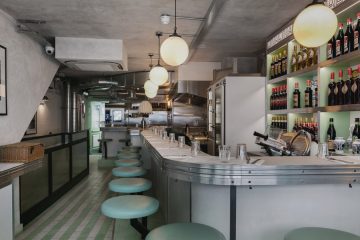as chosen by Britain’s top chefs
Silk Road, London SE5
Chosen by James Cochran, chef-owner, Restaurant 1251
I’ve lived in south London for 15 years and the neighbourhood restaurant that stands out is Silk Road in Camberwell. I’m a massive fan of their Xinjiang style of Chinese cooking and they do many unusual things that you don’t normally see in Chinese restaurants in this country. I associate kebabs with Turkish or Greek food, but here they do lamb skewers which they cover in delicious Asian spices and chargrill really quickly. Their dumplings are on point as well. In fact, everything is packed full of flavour, but nicely balanced. The restaurant is very minimalistic, drinks are BYO and the food is very affordable – spend £20 and you’re full.
Inver, Strathlachan, Argyll
Chosen by James Lowe, chef and co-founder, Lyle’s and Flor
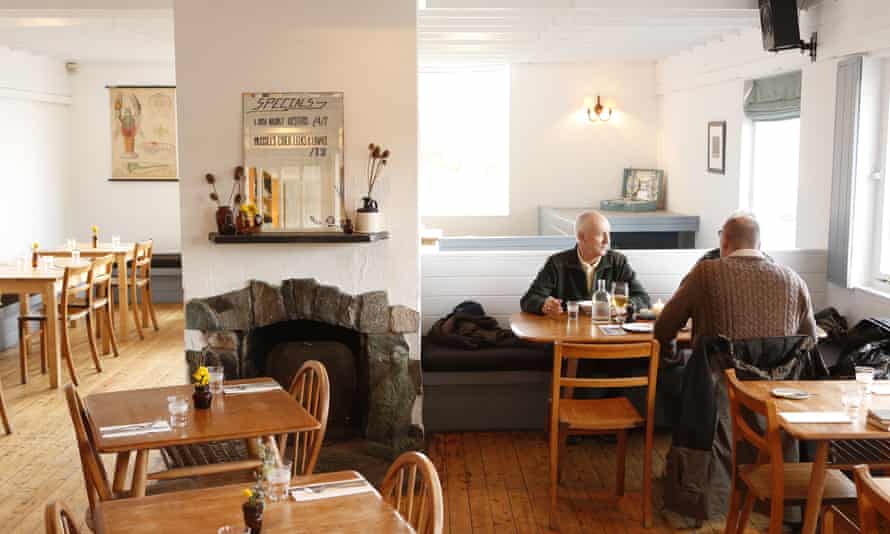
Inver is on a beautiful part of the west coast of Scotland, a couple of hours’ drive from Glasgow. It’s not over the top like some destination restaurants; there’s no desire to create theatrics. The dinner is fantastic, and it’s worth staying so you can have breakfast and its more casual lunch. We went for new year and stayed in a bothy by the water. For dinner, we had seaweed ice-cream with caviar, which was stunning, and an amazing langoustine dish with carrot. Pam Brunton and Rob Latimer run the place: she’s in the kitchen, he runs front of house. I’ve got a lot of admiration for them, because running a restaurant in a remote area is really difficult and they’ve made it work.
The Dawnay Arms, Newton-on-Ouse, Yorkshire
Chosen by Tommy Banks, head chef, Black Swan
I quite like fine dining, but I think what everybody really wants is an awesome Sunday roast and so often it’s disappointing. The Dawnay Arms is incredible. If I haven’t any got any plans for Sunday, I will be there. I’ve gone four weekends in a row before. I like to sit in the front bar because I can take my dog; first we go for a walk by the river, then call into the pub and have a roast. The Smiths run it: Martel is in the kitchen and Kerry runs the front of house. Obviously, we’re blessed up here with good produce, but they use all the best stuff. They don’t charge enough for what they do. I kind of wish I owned it myself – but then I wouldn’t want to eat there, so I suppose it’s best.
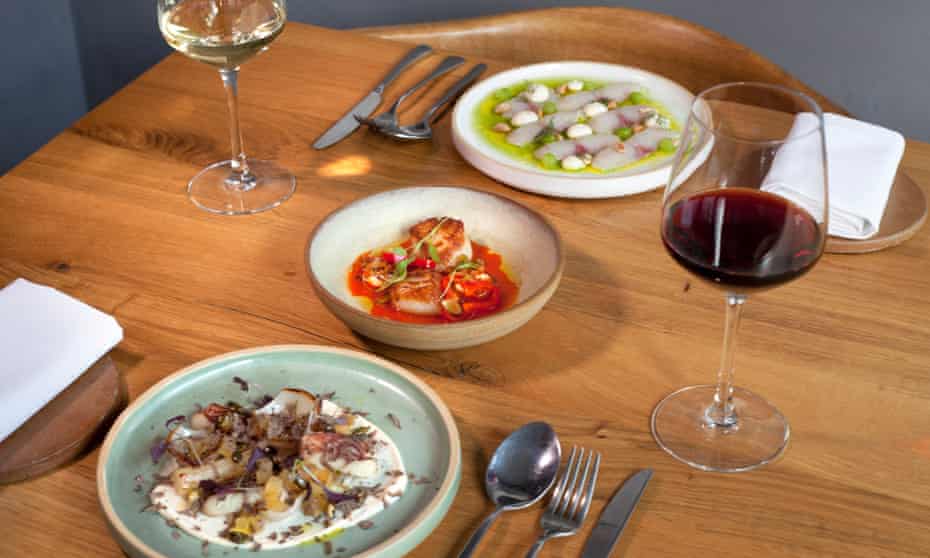
Black Radish, London SW19
Chosen by Phil Howard, chef and co-owner, Elystan Street
Whatever I eat, I want it to be good. A burger, a curry, truffle langoustine – I just like delicious food. It’s so often disappointing; inventive-sounding menus that make you think it’s going to be more ego-driven, cheffy rubbish. Here it’s delicious. The chef-owner, Toby Cartwright, is young but full of passion. His cooking is creative, underpinned with understanding, seasonality and, in the most part, classical flavours. It’s a very straightforward space with pleasant decor, and it’s a very happy place to be. And it’s just so nice to be in that kind of environment.
St Kew Cafe, Bodmin, Cornwall
Chosen by Paul Ainsworth, chef-owner, Paul Ainsworth at No 6
Not far from where I live, near the St Kew highway, is a farm shop with a cafe. My wife Emma and I go there as much as we can, and every time, to our amazement, there’s a table available. It’s probably only a matter of time before more people find out about it and it becomes impossible to find a seat. It’s so welcoming – the chef will always look up and give you a wave – and the food is so consistent, even if it’s just a bacon sandwich or a full English. The ethos is to showcase everything Cornish and it uses proper sourdough bread, nice butter, great bacon. Whether avocado with poached eggs on toast or a ham sandwich, the food is brilliant every single time. I can’t believe this is just up the road. It’s fantastic.
Native, London SE1
Chosen by Ramael Scully, head chef and co-owner, Scully St James’s
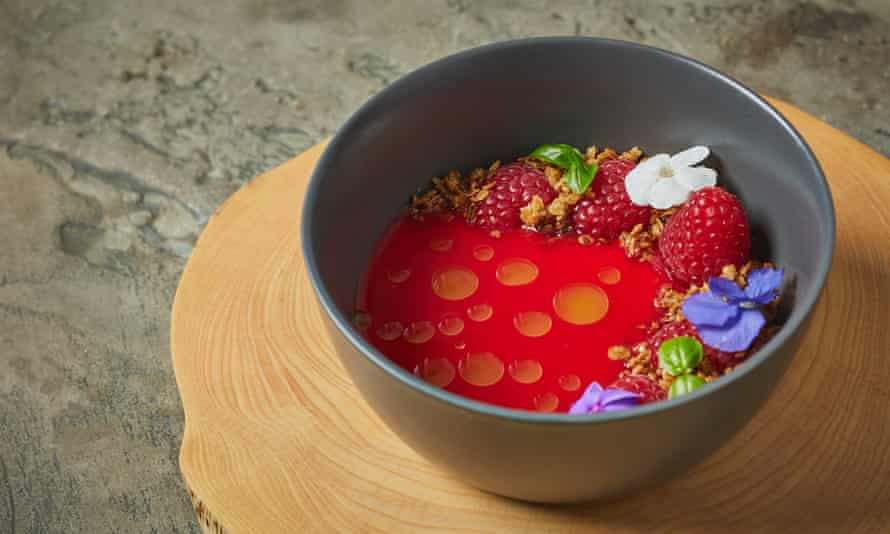
It’s a big space, all wood inside, run by a bunch of young people. Ivan Tisdall-Downes is an up-and-coming chef who’s really interested in foraging, and his business partner, Imogen Davis, trained hawks, so they have a nice story. I’d say Ivan’s style is modern British. I had a dish with roasted bone marrow and white chocolate that I thought sounded wack, but when I started eating it, I realised it really worked; and he made a nice beef tartare with pickled snails. Great food, great cocktails, great staff, a bit of loud music – it was really relaxing.
The Dining Room, Abersoch, Gwynedd
Chosen by Gary Usher, chef-owner, Sticky Walnut and Hispi
This restaurant on the Llŷn Peninsula is so underrated. The guy who runs it, Si Toft, is a one-man band – it’s just him in the kitchen, working around the clock – and he’s a phenomenal chef. His menus are just beautiful. I don’t understand why he’s never had any kind of national acclaim. His food takes influences from everywhere, though he does highlight Welsh ingredients. He’s big on fish, because of where he is, and he has things like laverbread on the menu. The lamb tongue dish is amazing – he does it as a terrine, and deep-fried as well. He has a leek and potato Welsh cake with smoked fish and hollandaise as a starter, and that’s so good. It is genuinely the kind of place you’d want in your area.
Taste of Pakistan, Hounslow
Chosen by Asma Khan, chef-founder, Darjeeling Express
A Pakistani friend of mine told me this was the most authentic food you can get outside Pakistan. If you go in the evening, you must book. It’s a casual restaurant, but so busy, with big tables of people sharing. A large naan arrives on a hook and would serve four or six. The chaapli kebab is the best I’ve had. The owner insisted we have the lamb charsi karahi, and it was the star dish. He and most of the people working there are Pashtun, and the food is similar to Afghan. You can really taste it in the pilau – it’s very fragrant, with raisins and strips of carrot. The Pashtun have nomadic tribal heritage, and eating on communal tables, in rainy Hounslow, I could imagine myself in the mountains, breaking bread – it is that kind of food.
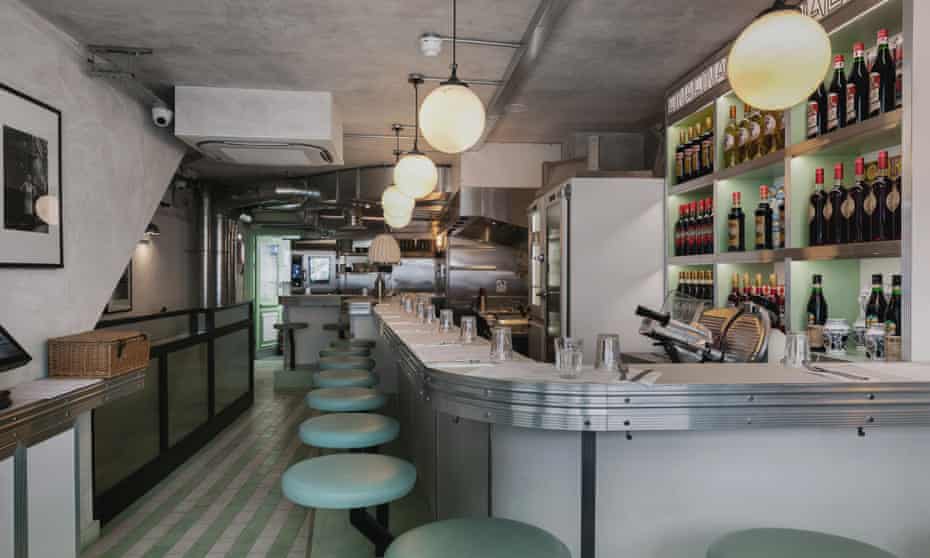
Lina Stores, London W1
Chosen by Zoe Adjonyoh, chef-owner, Zoe’s Ghana Kitchen
My wife Sara and I went to Lina Stores for a rare midweek evening out during the summer and we loved it. The pasta, which is made fresh on site every day, is the best I’ve eaten in London for many years. We loved the ravioli with minted courgette, parmesan cream and salted ricotta. And the ricotta and herb gnudi with sage and brown butter, which transported Sara back to her Italian grandmother’s cooking in New York. This place has flair, modesty and a focus on nuanced flavours and excellent service. It’s not so much for leisurely dining, but for a great meal served quickly before you head out somewhere, it’s ideal.
Kitchen at the Chapel, Abergavenny, Monmouthshire
Chosen by Sarit Packer, chef and co-owner, Honey & Co
We love this quirky place in Abergavenny, an art gallery cafe inside an old chapel that does really delicious food. We’ve spent whole afternoons there escaping the crowds at the Abergavenny food festival. Chef Rosie Sykes helped set it up, which is a great sign. One dish that stood out for me was smoked anchovies and egg mayonnaise on toasted rye bread, served with a beautiful green leaf salad, which they get from a special grower who doesn’t supply to London. I know, because I’ve been trying to steal them. It’s honest food, not fancy at all, in a buzzy, bohemian setting.
Sambal Shiok, London N7
Chosen by Chantelle Nicholson, chef-owner, Tredwells
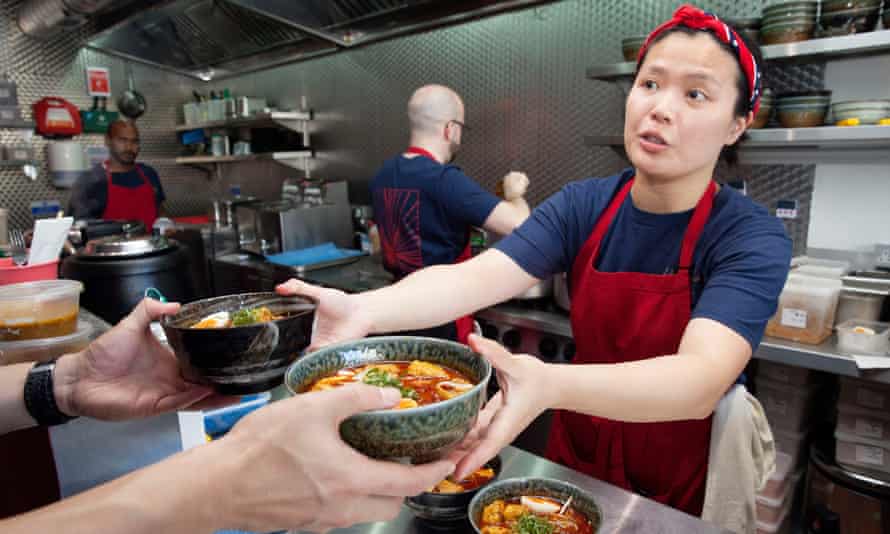
This Malaysian restaurant on the Holloway Road is unassuming but with an amazing energy. It’s always packed. There are no bells or whistles, but you can feel the love the chef-owner, Mandy Yin, puts into everything. She’s famous for her laksa, a spicy, creamy, very comforting soup with noodles, but she also makes delicious curries and amazing fried chicken. The flavour combinations are incredibly vibrant. It’s not a place for a quiet conversation, but the buzz is terrific and I love the food.
Singburi, London E11
Chosen by Erchen Chang, co-founder, Bao and Xu
This is a neighbourhood Thai restaurant that’s cheap and fun and refreshing, and the food is just pure tasty. It’s run by a mother and son. I went a couple of months ago with a big group and we ordered the whole blackboard menu. My favourite dishes were the clam with garlic, chilli and basil, which was simple and classic; the jungle curry crab, which was really dirty and hard to eat (you have to suck on the crab); and boat noodle soup which had that really good medicinal taste from dried roots that’s hard to find in London. The interior is bare. They have some very sensual fruit posters from the 80s on the wall, and photos of customers from years and years ago eating in the restaurant. There’s not much other decoration, but I think that makes the food stand out. I’m moving quite close to Singburi, so it’s going to be my local. I can’t wait.

The Walled Gardens, Manchester
Chosen by Mary-Ellen McTague, chef and co-founder, The Creameries
Eddie Shepherd is a vegetarian chef who runs an underground restaurant from his home in Whalley Range, cooking for eight people per night. (It’s open Friday to Monday, three weekends per month.) He makes multi-course menus that are really technical, with a touch of molecular gastronomy, but fun and delicious as well. He uses his home to really good effect; at one point you’re instructed to go into the living room and one of your courses – tofu, dandelion, pickled apple – is hanging from the ceiling in a bauble. He does this amazing thing with mushrooms, which are dried, rehydrated in stock, set into a block with an enzyme, then cooked, smoked and finally marinated again – they have a flavour closer to charcuterie. He uses a lot of techniques, but my big takeaway is just that it’s really enjoyable and delicious and fun.
L’Escargot Bleu, Edinburgh
Chosen by Tom Kitchin, chef-owner, the Kitchin, the Scran & Scallie and the Bonnie Badger
Although it’s been around since 2009, I don’t quite know how much longer L’Escargot Bleu will be slipping under the radar, but it’s one of my favourite restaurants in Edinburgh. Founded by Fred Berkmiller, a Frenchman who has lived and worked in Scotland for many years, the restaurant symbolises everything that’s great about the “Auld Alliance”. When you enter, it’s as if you’ve walked into a bistro in the backstreets of Paris, and all of the food is cooked with classic French techniques using Scottish ingredients. They serve a fantastic cassoulet with Scottish meat, as well as a perfect paté de campagne.
Tá Tá Eatery at Tayēr/Elementary, London EC1
Chosen by Jeremy Chan, head chef and co-owner, Ikoyi

Tá Tá Eatery is Zijun Meng and his partner Ana Gonçalves. If you took the food out of the context, which is very casual, and put it in a fine dining setting, it would stand out above everything else. Meng uses British produce with his Chinese heritage and some of Ana’s Portuguese flavour profiles in beautiful, intricate plates. I really like the way he’ll serve you pork that’s been aged 100 days, and you’re eating something he’s thought about 100 days earlier. It’s the same deep thinking you’d get in the best restaurants but he’s doing it in a cocktail bar, at a four-seater counter. They do the bar food and also a tasting menu. It’s him and a small induction hob, making these beautiful plates of food in a hectic space. It’s a bit rowdy, and it’s fun. But it’s almost showing you how hard London is as a city for entrepreneurial creative chefs like them to survive.
Ultracomida, Narberth, Pembrokeshire
Chosen by Stephen Terry, chef-owner, the Hardwick
This amazing cheesemonger might seem a bit out of place for Narberth but it sells it all; people travel from miles around. And it has a cafe with communal seating – everyone sits along these two big tables and a counter. It does nice simple things – great meatballs! – with Welsh and Spanish ingredients and it serves the wine it imports, which you can also buy in the deli along with Spanish items and local stuff. Just really nice people.

Perilla, London N16
Chosen by Selin Kiazim, chef-director, Oklava
There’s some amazing cooking going on in this warm, buzzy dining room. Ben Marks is a very talented chef and plates up the most beautiful dishes. The influences are more on the European side, but it’s quite an eclectic mix. Last time I went I had a canape-sized mouthful of yesterday’s bread soaked in a moules mariniere sauce – the best bit right there – and battered hake fried in beef fat with chip-shop curry sauce. It has a neighbourhood vibe, but is also a great place for an occasion: big windows that wrap around; beautiful plants everywhere. There’s a small bar area too, which is where I ate, looking through to Ben plating up.
The Canton Arms, London SW8
Chosen byMargot Henderson, chef and co-owner, Rochelle Canteen
This is my local, and has everything I enjoy about a pub: it’s friendly, warm and not too flashy. It’s familiar, and perfect on a rainy day. On top of that, it has great drinks and superb food. The dining room is cosy, with the most delicious menu – I always love the way it reads. Quite classic, but modern – it might have provencal beef shin. The blackboard menu has about four sharing dishes on it and they go much further than it says, which makes it great value. It’s gentle food for families and friends, served in big Le Creuset dishes, with a generous spirit.
The Inn at Whitewell, near Clitheroe, Lancs
Chosen by Lisa Goodwin-Allen, executive chef, Northcote
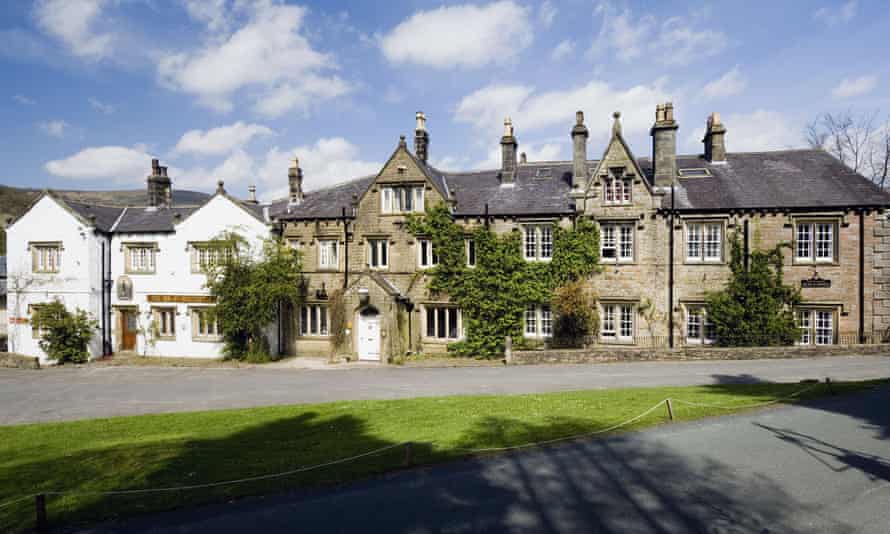
We go to this pub in the Ribble Valley a lot, a beautiful part of the world. The thing I like about it is that I don’t have to think too hard. The food is consistent, humble but always delicious. It’s pub classics, very British food: fish pies, hotpots, amazing meat or fish platters, good braising dishes. The menu doesn’t change that often but the special boards change all the time. There are roaring log fires. It’s a relaxed environment, so my young son enjoys going there too, and everybody who comes through is lovely – walkers, people who have been on a shoot, and dogs are welcome. The big draw is that you can have a walk round the Whitewell, then go and have something good to eat and a nice glass of wine.
Chesters by the River, Ambleside, Cumbria
Chosen by Simon Rogan, chef-owner, L’Enclume
On a day off, I like to go for lunch to this riverside cafe. I sit outside, relax and eat really tasty vegan and vegetarian food. The food has all sorts of influences – a bit of Moroccan, through to Chinese, biryanis, flame-grilled pizzas – but the main stars are the vegetables. It’s not doing it justice calling it a cafe, but that’s what it is. You can take away, and there’s a shop associated with it. The staff are friendly, the atmosphere is nice and the quality is great. My staff were always telling me how amazing it was, and it took me a while to get there. Now I can see why they love it.
